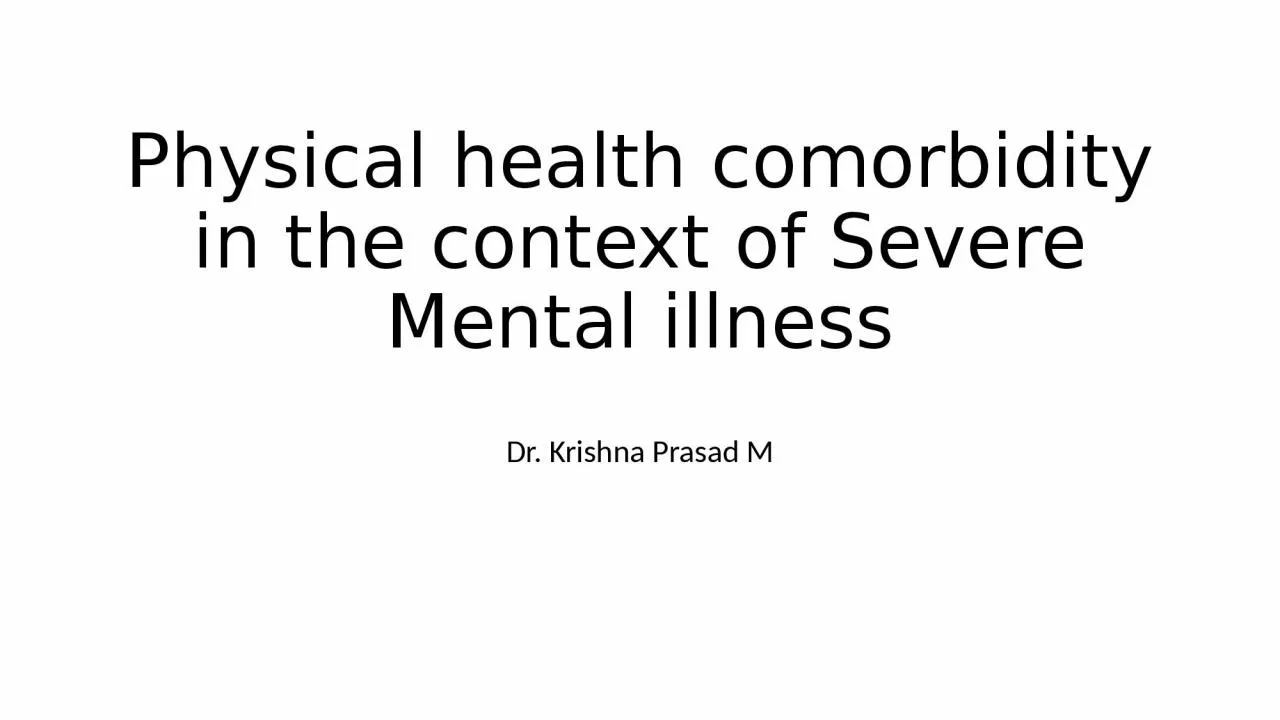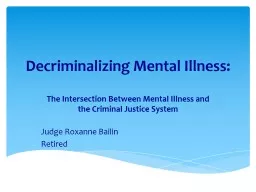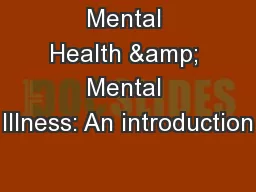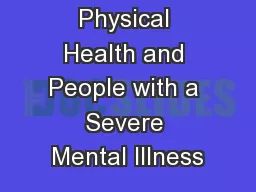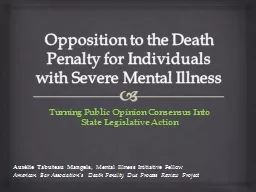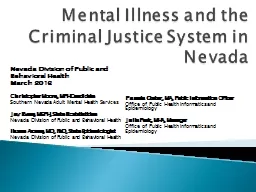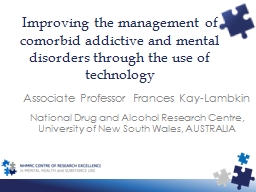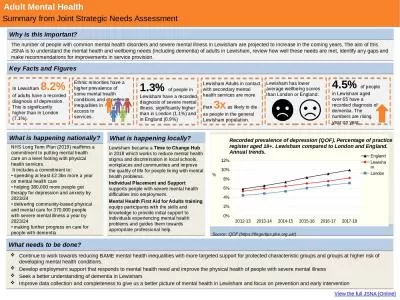PPT-Physical health comorbidity in the context of Severe Mental illness
Author : AdventurousAce | Published Date : 2022-07-28
Dr Krishna Prasad M Background People with severe mental illness die on average 1020 years earlier than the general population Mortality gap worldwide is widening
Presentation Embed Code
Download Presentation
Download Presentation The PPT/PDF document "Physical health comorbidity in the conte..." is the property of its rightful owner. Permission is granted to download and print the materials on this website for personal, non-commercial use only, and to display it on your personal computer provided you do not modify the materials and that you retain all copyright notices contained in the materials. By downloading content from our website, you accept the terms of this agreement.
Physical health comorbidity in the context of Severe Mental illness: Transcript
Download Rules Of Document
"Physical health comorbidity in the context of Severe Mental illness"The content belongs to its owner. You may download and print it for personal use, without modification, and keep all copyright notices. By downloading, you agree to these terms.
Related Documents

